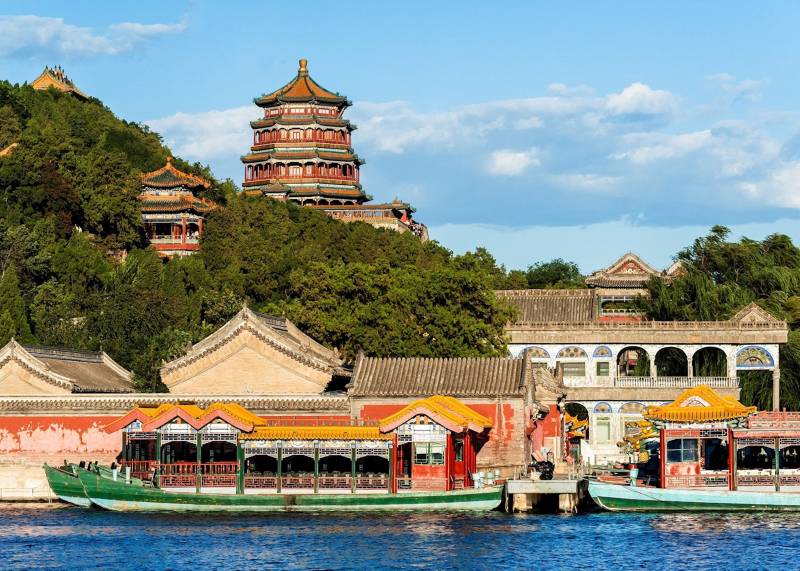Revisiting China post Covid-19: Summer Palace: A model of traditional architecture

Stay tuned with 24 News HD Android App

Besides a whole range of tourist attractions in and outside Beijing City, the summer palace stands out as an eye-catching one that hypnotises visitors from inside and outside of China. The buildings, corridors, passways, parks, waterways and paintings are preserved and maintained in a manner that speaks volumes about the skills of the curators and managers of this historical and gigantic project.
The Summer Palace is, without an iota of doubt, one of the finest examples of garden architecture in China. It is located in the northwest suburbs of Beijing. The 100-odd examples of traditional architecture in the park include pavilions, terraces, temples, pagodas, waterside gazebos, covered corridors, stone bridges and the famous marble boat. The palace occupies a total area of 290 hectares, three-quarters of which is made up of shallow lakes.

The construction of the Summer Palace took place at least 800 years ago and facts revealed that when the first emperor of the Jin Dynasty, Wan Yanliang, moved his capital to the vicinity of Beijing and built his ‘God Mountain Palace’ at the present site of Longevity Hill. Later his successor emperor of the same dynasty diverted the water from the nearby Jade Spring to the Gold Mountain, naming the lake it flowed into the Gold Sea.
It is shocking to learn that the Summer Palace had fallen victim to two acts of destruction over the years. The first time it happened was in 1860 when the Anglo-French forces invaded Beijing and ravaged both the Yuanmingyuan Garden and the Park of Pure Ripples. Every single building in the park was destroyed by fire.

Unfortunately, the second time it was destroyed was in 1900 when the Allied Forces attacked Beijing destroying the great temples which were rebuilt in the 1880s. Besides this, almost all valuable objects were stolen by the attacking army. It was as late as 1902, that Empress Dowager Cixi returned to Beijing from Xi'an and ordered the reconstruction of the park. An estimate says that she rebuilt the Summer Palace by spending some 40,000 taels of silver per day.
Let’s now have a look at the salient features of the Summer Palace. For example, the Garden of Virtuous Harmony has been the venue of the infamous Empress Dowager Cixi’s lavish birthday celebrations. It is learnt that the Empress would hold extravagant celebrations in the garden, complete with performances, feasts, and fireworks displays. She believed to have been spending huge sums of money on these celebrations.

One of the main attractions was the Tower of Buddhist Incense which is to date one of the most striking buildings in the Summer Palace. It is a tall pagoda-style tower that was built in 1750. The tower was used as a place of worship and also served as a lookout point for the emperor and his entourage. Similarly, Suzhou Street is a unique feature of the Summer Palace. It is a replica of a typical street in Suzhou, a city famous for its canals and gardens. The street is lined with traditional shops, teahouses, and restaurants, and it offers a glimpse into the daily life of Chinese merchants and artisans.
The Summer Palace has been the venue of great international events. It was in 1954, that the palace hosted the first summit of the Bandung Conference, which was attended by leaders from many newly independent Asian and African countries. This semblance of great leaders led to the formation of the Non-Aligned Movement.
Another beautiful aspect of the Summer Palace is also known for its innovative water management system. The garden is filled with artificial lakes and waterways that are fed by natural springs and rainwater. The water is then recycled and used to irrigate the gardens and plants. The best part of the Summer Palace is its innovative water management system. The garden is filled with artificial lakes and waterways that are fed by natural springs and rainwater. The water is then recycled and used to irrigate the gardens and plants. According to tourist guides, the Summer season is the best time of year to visit the Summer Palace.
